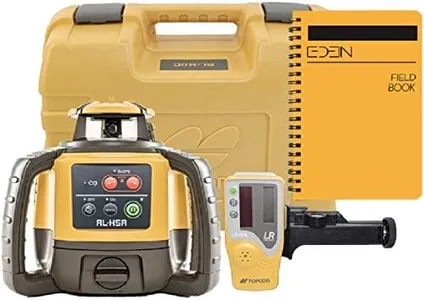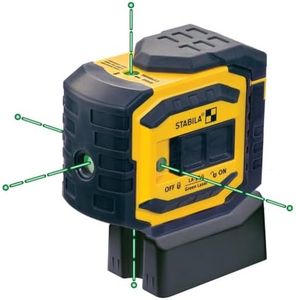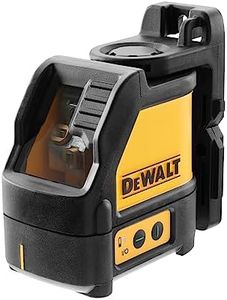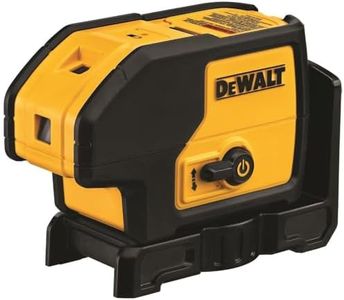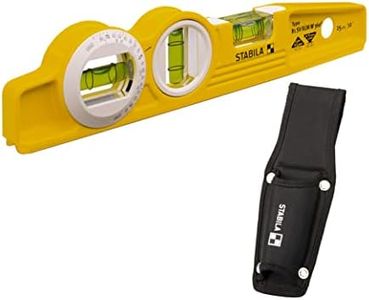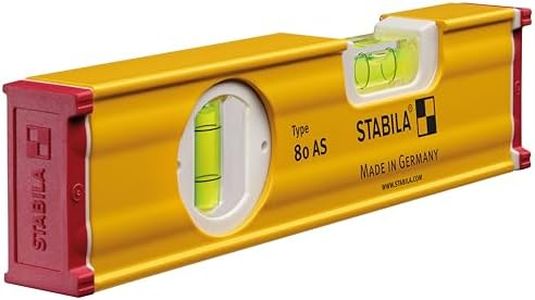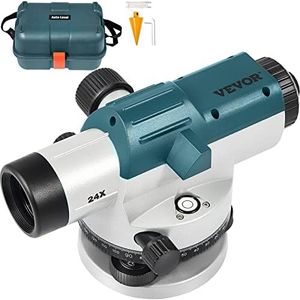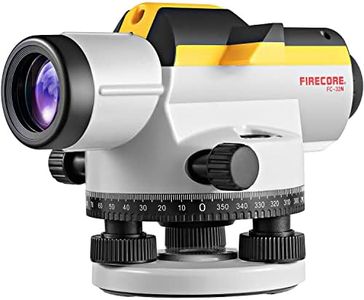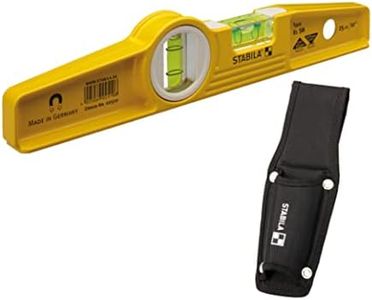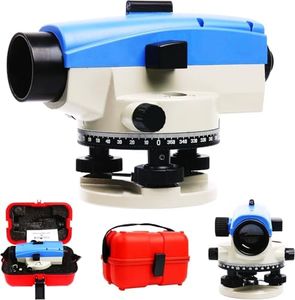We Use CookiesWe use cookies to enhance the security, performance,
functionality and for analytical and promotional activities. By continuing to browse this site you
are agreeing to our privacy policy
10 Best Optical Level
From leading brands and best sellers available on the web.By clicking on a link to a third party's website, log data is shared with that third party.
Buying Guide for the Best Optical Level
Choosing the right optical level can make tasks such as construction site leveling, surveying, and landscaping far more accurate and manageable. The optical level is essentially a telescope mounted on a base, used to establish or check points in the same horizontal plane. To find the best fit, you need to consider how and where you'll use it, how precise your measurements need to be, and what kind of convenience or durability is important for your work or hobby.MagnificationMagnification refers to how much closer the optical level lets you see distant objects. Higher magnification (like 32x) allows for precise measurements over longer distances, which is important for large construction sites or surveying jobs. Lower magnification (around 20x) is easier to use for smaller projects or when you're working in a more confined space. Choose higher magnification for large, open areas and lower for smaller, close-range tasks.
AccuracyAccuracy is usually listed as a millimeter deviation per kilometer, indicating how much error might occur in the measurement. For demanding jobs like surveying, you'll want higher accuracy (smaller values like 1mm/km). For general building, a slightly lower accuracy is acceptable. Think about how precise your outcomes need to be and choose accordingly—the more critical the measurements, the higher the accuracy you should prioritize.
Objective Lens DiameterThe objective lens diameter affects how much light enters the optical level, impacting image brightness and clarity. Larger diameters (for example, 40mm or more) perform better in low light and give a clearer picture, crucial for detailed work or early/late in the day. If you primarily work outdoors in bright conditions or don't need extreme detail, a smaller lens may suffice.
Compensator TypeThe compensator keeps the line of sight as level as possible, even if the instrument is slightly tilted. There are magnetic and pendulum compensators, with magnetic ones usually offering greater stability, especially where vibrations are common. If you’ll be using the level in areas with a lot of movement, like busy construction sites, prioritize a robust compensator system to ensure accurate readings.
Working RangeWorking range tells you how far the optical level can accurately measure. Shorter ranges work well for home or garden use, while larger ranges are essential for big projects like roadwork or extensive building sites. Consider the maximum distance you'll need to measure to make sure the working range of your optical level fits your typical use.
Durability and Weather ResistanceDurability means how well the device withstands knocks, dust, and water. Many optical levels are rated with terms like 'weather resistant' or 'IP rated.' If you expect to work in rough outdoor conditions or unpredictable weather, choose a model with higher weather resistance and better build quality to maintain accuracy and long-term usability.
